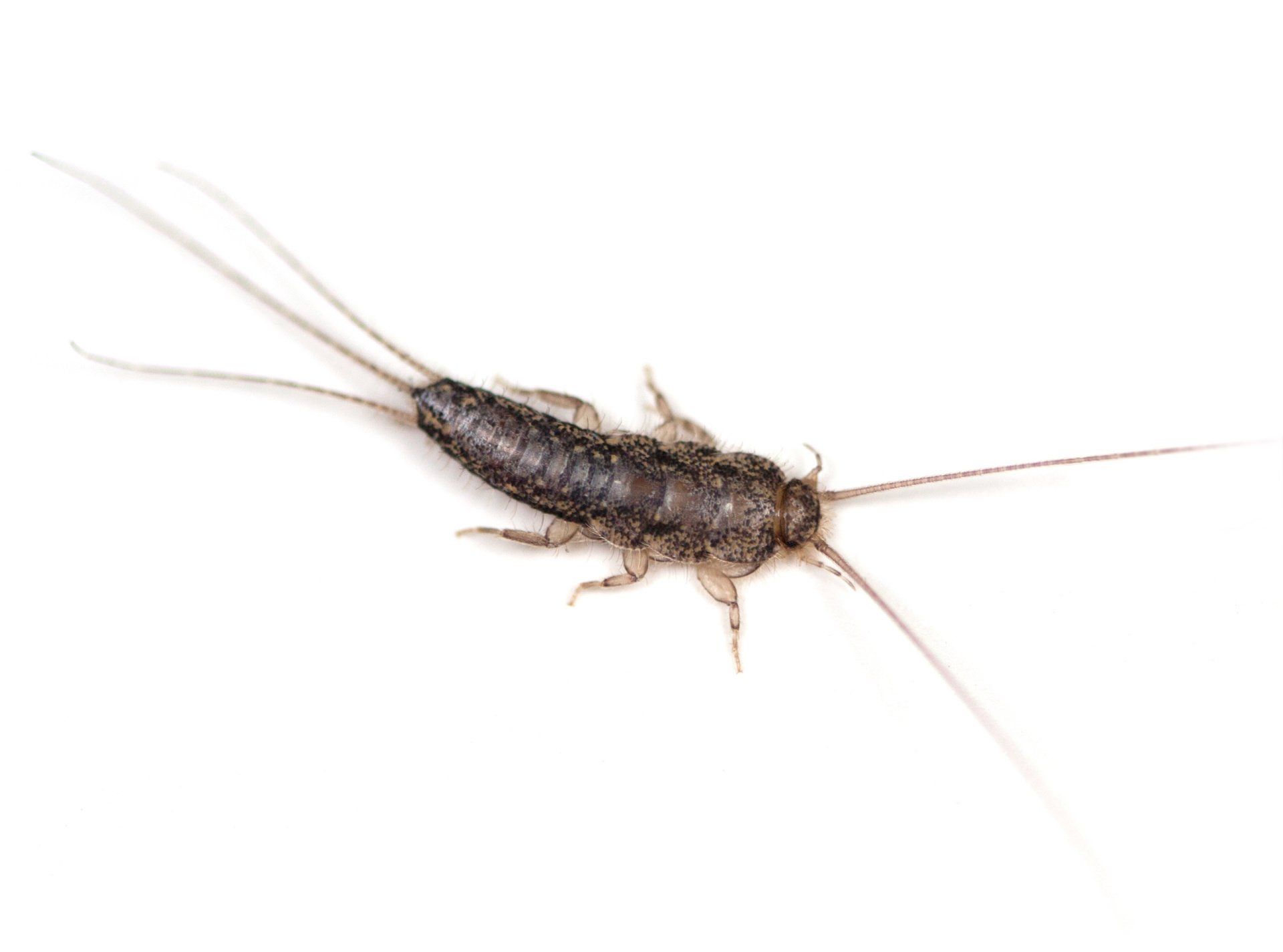Silverfish Pest Control Services
Local Silverfish Extermination
What are Silverfish?
Immediate Silverfish Control
How to Treat Silverfish
Griffin Pest Management utilizes an integrated pest management strategy that combines the unique benefits of several silverfish control methods.
Inspection
Identifying the severity of a silverfish problem is important because it allows our technicians to locate problematic areas and determine how to effectively treat against an infestation.
Local Spot Treatment
Using chemical pesticides that are effective against silverfish helps keep silverfish populations under control. Residual pesticides can be targeted towards areas that have shown silverfish activity so that the bugs become infected when they come in contact with the local application.
Desiccant Dusting
Dusting can be an effective treatment option in hard-to-reach places like light fixtures, electrical outlets, and inside wall cavities. These dusts help dehydrate the silverfish, so they die of thirst.
Adhesive Traps
Just like glue traps used for other rodents and bugs, adhesive traps are also effective against silverfish. These won’t offer a full solution to your silverfish problem, but they are great to help identify high traffic areas.
Exterior Perimeter Pesticide Application
An exterior perimeter spray will create a chemical barrier that silverfish won’t be able to cross without infecting themselves. This helps eliminate any silverfish once they have made it past that barrier into your home.
Exclusion
Another prevention strategy is to close up any access points that silverfish are using to get into your home. This can include using caulking to seal up cracks and crevices.
Silverfish Diet & Damages
How to Prevent Silverfish
Signs of Silverfish Infestation
There are several common signs of a silverfish infestation:
Silverfish
Silverfish are known to come out in the dark so they can sometimes be seen in bathrooms and kitchens when the lights are turned on. They will scurry to get somewhere hidden and out of sight, so they won’t be visible for long.
Holes in paper, books, and wallpaper
Silverfish like to feed on glue and paper so they will often find paper to feed on in places like in decorative wallpaper, in books kept in storage, in cardboard boxes, etc. If you notice that paper has started to weaken, disintegrate, or have holes, then it is likely a sign that you are dealing with silverfish or some other paper consuming insect.
Small black specks
Dark grains of what looks like pepper flakes can be signs of silverfish poop. They won’t be in high concentrations like other insects, which could make this more difficult to identify.
Fabric with holes
Silverfish will also consume cotton and other fabric materials. If you notice holes in clothing, linens, bedding, and upholstery, it could be a sign of a silverfish infestation.
How to Contain Silverfish
Taking on a severs silverfish infestation can be difficult to deal with and contain. If they are pervasive, they will be in different areas of your home or business. To try and keep them localized to not have them spread to new locations it is important to:
Dry: Ensuring that silverfish do not have a humid harborage place where they can thrive is critical to minimizing silverfish populations.
Seal: Anything that could be a source of food for silverfish should be properly sealed in containers that can’t be breached.
Separate: Other items like books and clothing should be stored in dressers and shelves that have double sided tape on the footing to catch any silverfish crawling towards a potential meal. This should also be done for any furniture with upholstery to prevent damages.
Eliminate: Discard any food sources that are already contaminated. Also get rid of unneeded magazines, mail, newspapers, and cardboard boxes.
Exterminate: Use a residual pesticide that will be effective for some time that can infect silverfish on contact.
Contact Griffin Pest Management
If your have noticed silverfish in your bathroom, kitchen, or laundry room it is time to have your house inspected by a professional pest control expert. Our licensed silverfish exterminators can come out to provide an inspection to identify any problematic areas so we can create a custom treatment plan. Call Griffin Pest Management now to schedule an inspection.
Quick Facts About Silverfish
Habits
Silverfish usually enter a structure through insulation during construction. They eat a wide variety of foods containing starches and carbohydrates such as rolled oats, dried beef, flour, starch, paper, cotton, some synthetic fibers, sugar, beef extract, dead insects, glue, paste and linen. They can also feed on surface molds in damp areas. They can live long periods of time without food. Eggs are laid in protected areas, such as behind baseboards, and hatch in from 20 to 40 days depending on temperature and humidity.
Habitat
Silverfish prefer temperatures of 70 to 80F, moist situations and can be found most anywhere in a house. They are commonly found in attics especially if there are boxes of books.
Threats
They can do considerable damage to some natural and synthetic fibers, books, and other paper products. Their feeding marks are irregular and surface etching often appears that may not even penetrate paper. They may also leave yellow stains, especially on linens.
Prevention
Silverfish are unable to reproduce or even to survive in buildings where winter heating and moisture loss results in low relative humidity. Airtight houses with efficient humidifiers that keep the relative humidity above 50% year-round can develop silverfish infestations that are very difficult to control using typical insecticide applications. To achieve control under those conditions, the relative humidity will need to be reduced. Besides cleanup of clutter and other food items that may be supporting the infestation, insecticide applications are required for silverfish management.



